Don't miss our LKS's latest kiosk machine video! Key highlights include the responsive touchscreen, seamless integration with backend systems, and robust security features. See how our kiosk machine can revolutionize your customer interactions and operational efficiency. Watch now!
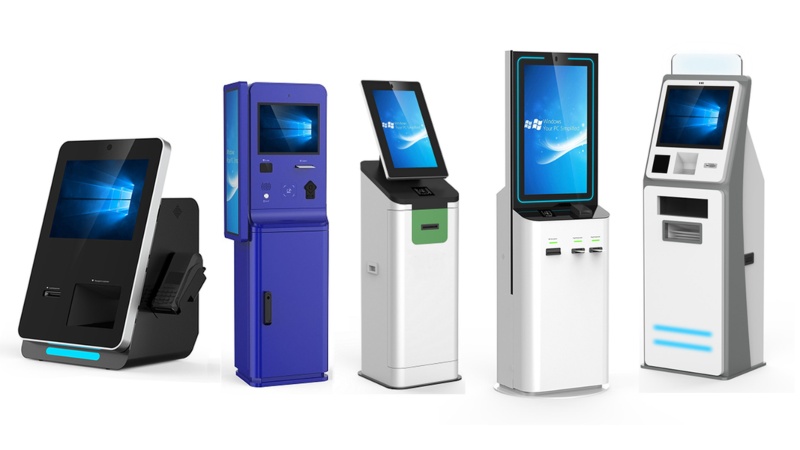
| Components | Details | |
| PC system | Industrial Board | Seavo/ Gigabyte/Advantech AIMB 562 |
| CPU | Dual core E5700/G2020, 2.8ghz; Intel Dual Core I3/I5/I7 | |
| RAM | 2GB /4 GB / 8GB | |
| HDD | 500G | |
| Interface | 6 RS-232 Ports;1 LTP;6 USB Ports,1 10/100M Net Port ;Integrated Net Card, Sound Card | |
| PC Power Supply | HUNTKEY/Great Wall | |
| LCD monitor | Screen Size | 17 inch/19inch ( optional from 8inch to 65inch) |
| Brightness | 250cd/m2 | |
| angle | horizontal 100°above;Vertical 80°above | |
| Contrast | 1000:1 | |
| Backlight tube life | more than 40,000hours | |
| Max. resolution | 1280×1024 | |
| Touch screen | Screen Size | 17/19 inch Diagonal ( optional from 8inch to 65inch) |
| Resolution | 4096x4096 | |
| High Transparence, high precision and durability,Orientation precision< 2mm(0.080 inch);pure tempered glass;Single-point touch Life expectancy more 50,000,000 times | ||
| Bank/Credit Card Reader | Interface | RS232 |
| Card Type | Support Magcard, IC Card, RF Card, Mifare S50,S70,UL Card | |
| Power Voltage | DC 24V±5% | |
| Card Entry method | Magnetic signal, Optoelectronic signal and rear card signal | |
| Encrypted Pinpad | Keylift~span | 2,000,000 cycles |
| Key force | 2~3N | |
| Key trip | >2.5mm | |
| Protection level | ip65 | |
| Cashcode Bill acceptor | Validation Rate | 96% or higher |
| Banknote Insertion | Four-way | |
| Escrow | One banknote | |
| Capacity | 1000 notes Max | |
| Coin Acceptor | Coin Acceptance | Max 32 coin types, in 2*16 or 1*32 channels |
| Detection ability of counterfeit Coins | with high detection ability of counterfeit coins | |
| Accepting Speed | 2 Coins/Sec | |
| Supply Voltage | 10V-16V DC | |
| Epson receipt thermal printer | Autocutter | included |
| Technology | Thermal printing | |
| Paper width | 80mm | |
| Printing speed | 150mm/s | |
| Data buffer | 4KB | |
| Interface | RS232 ,USB | |
| UPS | Input voltage | 145-290va |
| Output voltage | 200-255va | |
| Max time for supplying a single PC | 3~20minutes (for single PC) | |
| Digital Power Supply | AC input voltage range | 100~240VAC |
| Frequency | 50Hz to 60Hz | |
| AC input voltage range | 100~240VAC | |
| Frequency | 50Hz to 60Hz | |
| Accessories | Wire-lan port, USB ports, speakers, fans, cables, screws, etc. | |
| Operation System | Windows 7 or Windows XP operation system without license | |
| KIOSK Cabinet | Durable steel frame, Slim and smart design; Easy to install and operate; Moisture proof,Antirust,Anti-acid,Anti-dust,Static free, have color and LOGO upon request. | |
| Packing | Security Packing method with bubble foam and wooden case | |
Parking Machine – Automates parking fee collection with multiple payment options and real-time data integration.
Self-Ordering Machine – Enhances restaurant efficiency with interactive menus and seamless payment processing.
Payment Kiosk Machine – Secure self-service terminals for bill payments, retail transactions, and financial services.
Outdoor Kiosk Machine – Weather-resistant, high-durability kiosks for various outdoor applications.
Check-In Kiosk Machine – Streamlines visitor, hotel, and airport check-in with ID verification and booking systems.
Self-Service Kiosk Machine – Multi-functional kiosks for retail, healthcare, and hospitality automation.
Check-Out Kiosk Machine – Fast, self-service checkout solution reducing queues and improving customer experience.
ATM Kiosk Machine – Secure banking kiosks for cash withdrawals, deposits, and financial transactions.
Ticketing Machine – Convenient self-service ticket sales for cinemas, transportation, and events.
Hospital Kiosk Machine – Simplifies patient registration, bill payment, and appointment scheduling.

Operating System: Commonly Windows, Android, or Linux, providing a platform for applications.
Content Management System (CMS): Allows remote content updates and management.
Security Software: Protects user data and prevents unauthorized access.
Custom Applications: Tailored software to meet specific business needs, such as point-of-sale (POS) or check-in systems.
Analytics Tools: Tracks usage and performance data to improve service and decision-making.
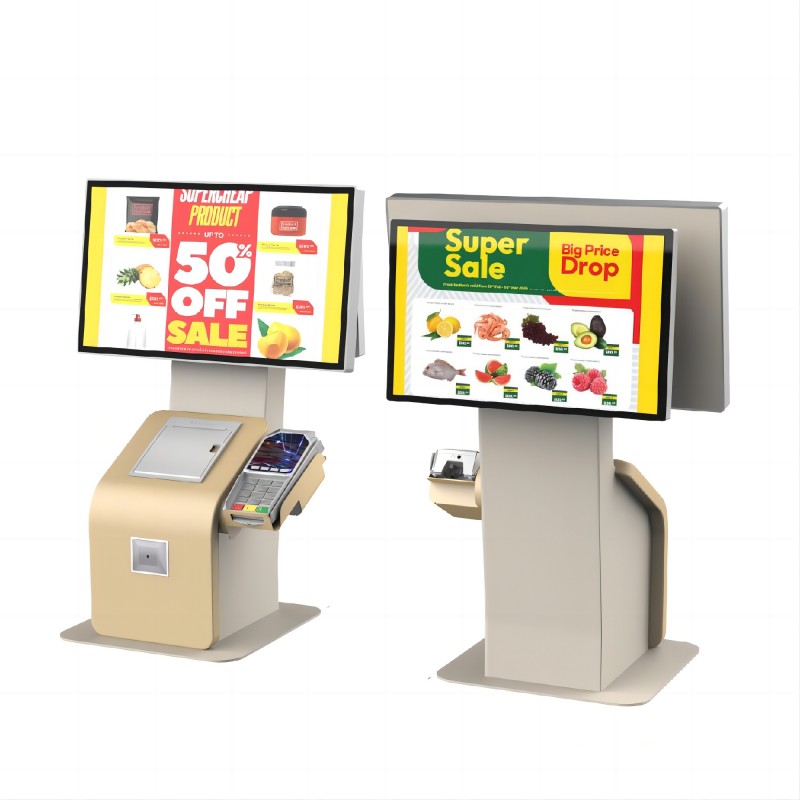
A kiosk machine operates by providing a user-friendly interface, typically through a touchscreen, where users can interact with the software applications. Users can access information, complete transactions, or perform tasks independently. The machine processes inputs via its processor, retrieves or processes data, and provides outputs, such as printed tickets, receipts, or on-screen information. Connectivity options enable integration with backend systems for real-time updates and data exchange.
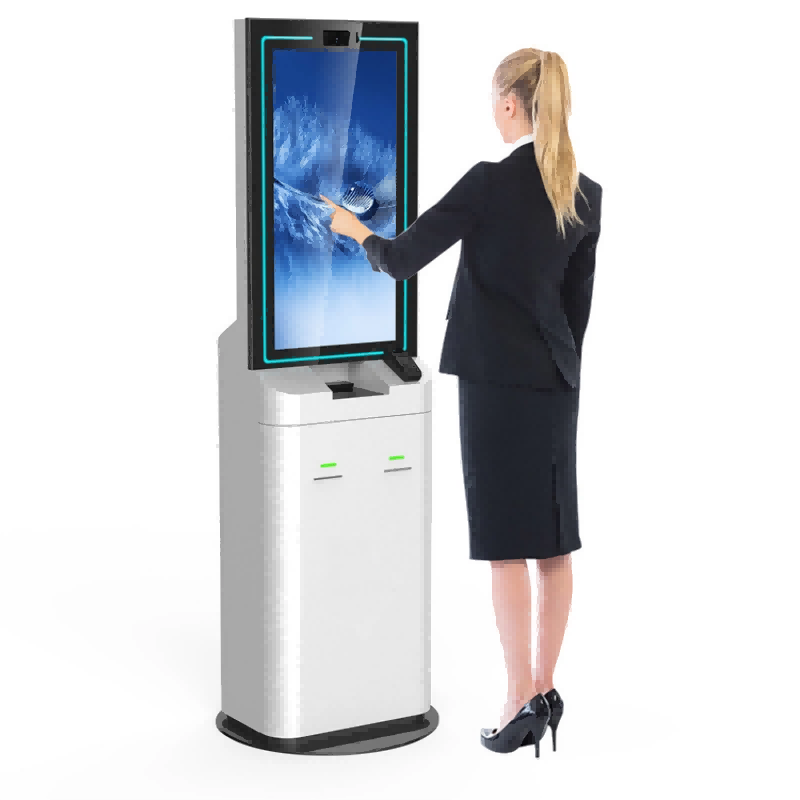
Improved Customer Experience: Provides quick and easy access to services and information.
Operational Efficiency: Automates tasks, reducing the need for staff and minimizing wait times.
Cost Savings: Decreases the need for printed materials and can reduce labor costs.
24/7 Availability: Offers services round the clock without the need for human presence.
Data Collection: Captures user data for better insights and decision-making.
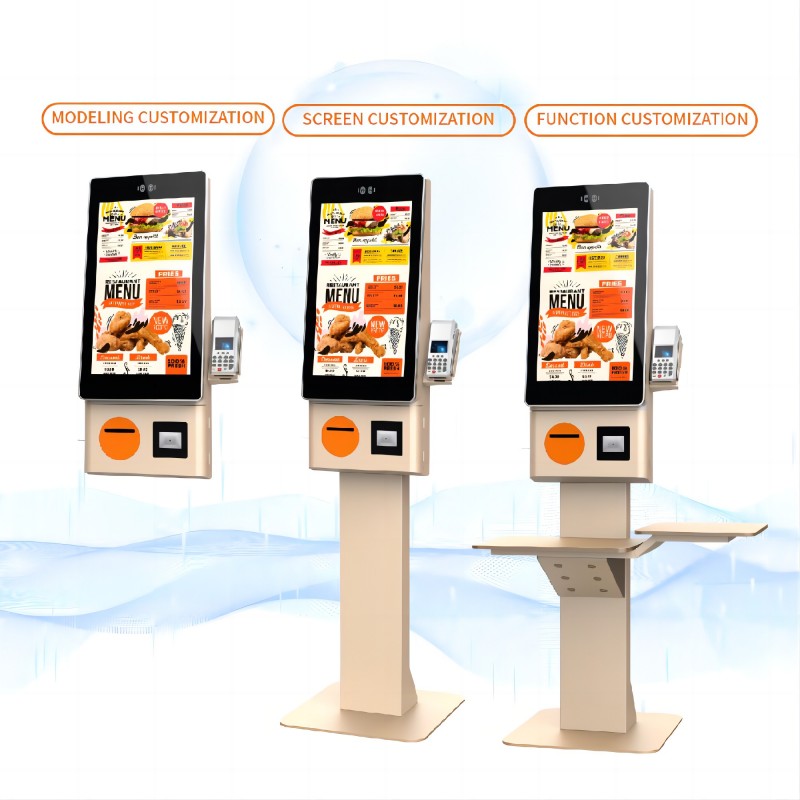
Retail: Customers can search and learn about products, and the kiosks streamline the payment process, reducing wait times.
Healthcare: Facilitates quick and efficient patient registration, and helps patients and visitors navigate through large healthcare facilities.
Hospitality: Expedites the check-in and check-out process for guests, and allows guests to book services like spa appointments or restaurant reservations.
Transportation: Provides self-service ticket purchasing for trains, buses, and flights, and displays schedules, delays, and other travel-related information.
Government: Offers access to public information and services, and enables citizens to pay bills and fines easily.
Education: Provides students and visitors with campus maps and information, and facilitates book checkouts and returns.
Corporate: Streamlines the process of registering and managing visitors, and displays important company announcements and updates.
Entertainment: Offers self-service options for purchasing tickets to movies, concerts, and events, and enhances the visitor experience in museums and theme parks with interactive content.
Restaurants and Food Service: Allows customers to place orders without needing to interact with staff, and showcases menu items and promotions dynamically.
Financial Services: Provides banking services such as withdrawals, deposits, and account inquiries, and enables users to pay bills and manage accounts.
Public Spaces: Provides maps, directories, and other helpful information in places like malls, airports, and city centers, and displays advertisements and promotions dynamically.
Fitness and Recreation: Allows members to check in, renew memberships, and book classes or facilities, and provides schedules, event information, and facility updates.
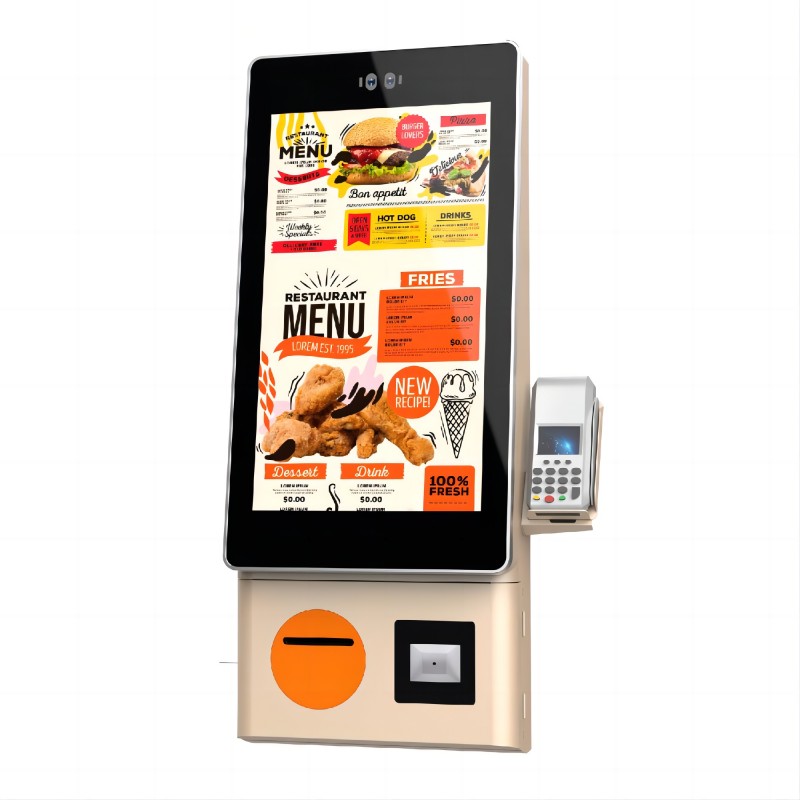
What are Customization Options of a kiosk machine
Branding: Customizable enclosures and interfaces to reflect brand identity.
Hardware Add-ons: Options for adding peripherals like printers, scanners, or cameras.
Software Customization: Tailored applications and features to suit specific business needs.
Display Options: Various screen sizes and resolutions to match different use cases.
Mounting Styles: Freestanding, wall-mounted, or countertop designs to fit various environments.

Purpose and Use Case: Define the primary function and setting of the kiosk machine.
Quality and Durability: Ensure high-quality components and a sturdy enclosure.
Customization Needs: Evaluate the level of hardware and software customization required.
Integration Capability: Check for compatibility with existing systems and software.
Support and Maintenance: Verify the availability of technical support, warranty, and maintenance services.
Budget: Consider initial costs, as well as ongoing maintenance and operational expenses.
User Interface: Ensure the interface is intuitive and accessible for all users.
Security Features: Ensure robust security measures to protect user data and prevent tampering.
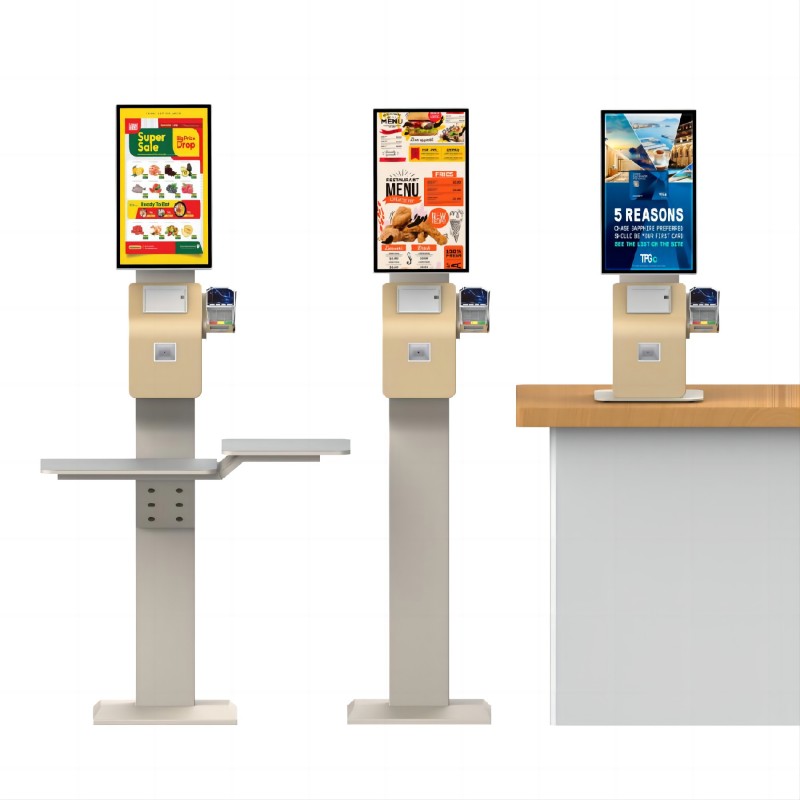
Research and Identify Needs: Begin by clearly defining the purpose of the kiosk (e.g., self-service, informational), and list out specific features and functionalities required.
Evaluate Manufacturer Reputation: Look for manufacturers with a solid reputation in the industry. Check online reviews, testimonials from other clients, and their track record in delivering quality kiosk solutions.
Assess Product Quality: Examine the materials used in the kiosk construction, such as the durability of the metal casing and the quality of the touchscreen. Ensure that the components like printers, scanners, and payment devices meet high standards for reliability and performance.
Consider Customization Options: Determine if the manufacturer offers customization options that align with your branding needs and specific functional requirements. This includes the ability to integrate specialized hardware or software solutions tailored to your business.
Review Technical Support: Inquire about the manufacturer's technical support services. Check their response times, availability of support staff, and the comprehensiveness of their service agreements. Understand the warranty coverage and maintenance options provided.
Evaluate Integration Capabilities: Ensure that the kiosk machine can seamlessly integrate with your existing systems, such as point-of-sale (POS) systems, customer relationship management (CRM) software, or backend databases. Verify compatibility with the necessary software applications and APIs required for smooth operation.
Check Regulatory Compliance: Verify that the kiosk machines comply with relevant regulatory standards and certifications, especially if they are used in sensitive environments like healthcare or financial services. This includes ADA (Americans with Disabilities Act) compliance for accessibility features.
1. Define Requirements: Create a detailed list of requirements, including specific functionalities, technical specifications (e.g., screen size, operating system compatibility), and any regulatory requirements.
2. Research Options: Identify potential manufacturers through online research, industry trade shows, referrals from peers, or recommendations from industry associations.
3. Request Proposals: Contact selected manufacturers to request detailed proposals. Include specifications, pricing, delivery timelines, and any additional services or customization options.
4. Evaluate Proposals: Compare proposals from different manufacturers based on criteria such as cost-effectiveness, quality of proposed solutions, customization capabilities, technical support offerings, and integration capabilities.
5. Request Demos: Schedule live demonstrations or request video demonstrations of the kiosk machines in operation. Evaluate user interface (UI) design, ease of use, response times, and overall functionality.
6. Negotiate Terms: Initiate negotiations on pricing, warranty terms, delivery logistics, installation requirements, and ongoing support agreements. Clarify any contractual terms related to maintenance services and software updates.
7. Finalize Purchase: Review and finalize the purchase agreement with the selected manufacturer. Ensure that all terms, including payment schedules and delivery timelines, are clearly defined and agreed upon.
8. Coordinate Installation and Testing: Coordinate the logistics for delivery, installation, and setup of the kiosk machines at your desired locations. Conduct thorough testing to ensure proper functionality and integration with your systems.
9. Training and Launch: Provide training for your staff on how to operate and maintain the kiosk machines effectively. Plan for a smooth deployment and launch strategy, considering user acceptance testing (UAT) and initial customer interactions.
10. Monitor Performance: Continuously monitor the performance of the kiosk machines post-launch. Gather feedback from users and stakeholders to identify any potential issues or areas for improvement. Regularly assess the return on investment (ROI) based on operational efficiency and customer satisfaction metrics.
By following these detailed steps, you can effectively navigate the process of selecting a reliable kiosk machine manufacturer and purchasing kiosk machines that align with your business objectives and operational requirements.
What did our happy clients say?
We recently purchased LKS's self-ordering kiosks (32-inch touchscreen, dual payment system) for our fast-food chain. The intuitive UI and seamless integration with our POS have boosted efficiency. The sturdy build and quick response time exceeded expectations. Highly recommended!
LKS’s outdoor payment kiosk (43-inch sunlight-readable display, IP65-rated, NFC & QR scanner) is perfect for our parking facility. The robust anti-vandal design ensures durability, and customers love the fast, contactless payment options. Excellent after-sales support!
Our hospital recently installed LKS’s check-in kiosks (21.5-inch screen, passport scanner, receipt printer). The multilingual interface and high-speed processing have significantly reduced patient wait times. LKS’s customization options made the deployment seamless!
We integrated LKS’s ticketing kiosk (27-inch capacitive touchscreen, thermal printer, barcode scanner) at our cinema. It handles high traffic effortlessly and speeds up ticket sales. The sleek design and reliable performance make it a game-changer. Highly recommended!